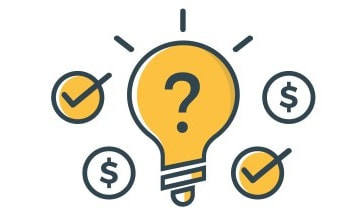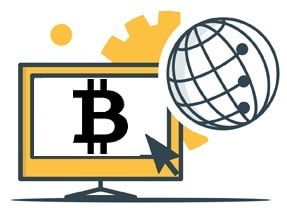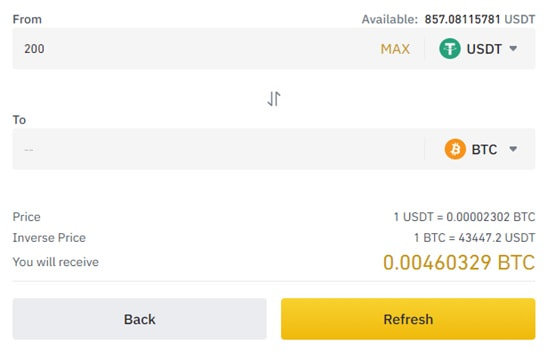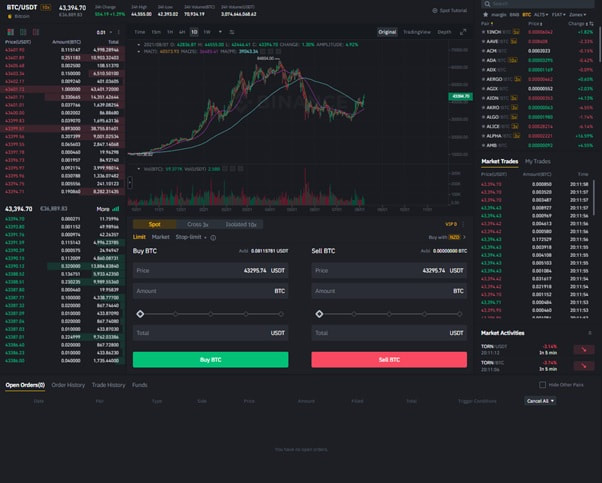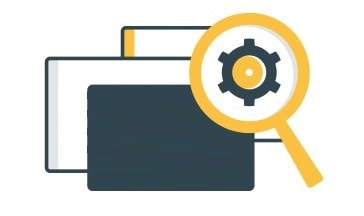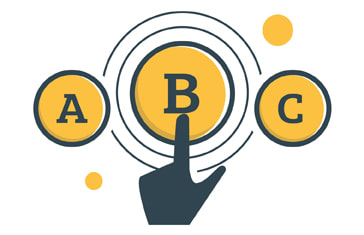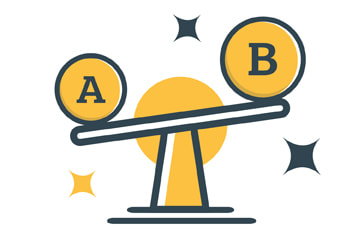Binance Review
Our guide outlines Binance's features, fees, pros, cons, and comparisons with other alternatives.
Updated 18 July 2024
Binance summary
This Binance review covers the following:
Warning:
- Binance is ranked the largest cryptocurrency exchange in the world. The platform often facilitates the equivalent of more than US$22 billion of spot transactions in 24 hours.
- Binance became a registered Financial Services Provider in September 2022.
- The locally based NZ team worked with Binance’s global team to officially launch its platform in New Zealand in September 2022.
- Binance’s founder and CEO, Changpeng Zhao, better known as “CZ”, is a well-known figure in the cryptocurrency community. He has over 8.1 million followers on Twitter.
- Binance was founded in 2017.
- Binance New Zealand currently offers numerous products, including spot cryptocurrency exchange, margin trading, interest-earning savings accounts, NFTs and more.
- Binance has no firm headquarters and operates as a decentralised company, harnessing the power of a global talent pool.
- Binance supports 350+ coins on its platform.
- In summary, Binance is by far the largest cryptocurrency exchange worldwide by trading volume. In recent times, Binance has become the go-to choice for many cryptocurrency investors.
This Binance review covers the following:
- Introduction to Binance
- Products and Services
- Deposits and Withdrawals
- Understanding BNB Coin
- The Pros and Cons of using Binance
- Binance Alternatives (Easy Crypto vs Swyftx)
- Frequently Asked Questions
Warning:
- By publishing this guide, we are not recommending or suggesting in any way or form that Bitcoin or any other cryptocurrency is a suitable investment.
- We published and update this guide to help people understand the Binance platform - MoneyHub is conservative and our publisher Christopher Walsh, has zero Bitcoin or other cryptocurrency investments.
- We present this information in good faith and remain objective at all times. By including this guide under our Investing and Saving section, we are not advocating that cryptocurrency is an investment. We may earn a referral bonus for anyone that clicks on some of the below links - see our Advertising Policy for more details.
Introduction to Binance
Binance is the largest cryptocurrency exchange and it didn’t happen by accident. They understood what traders want and need and built precisely that before anyone else did. Binance’s ascent to becoming the largest exchange happened very quickly. Binance offers a versatile desktop, web and mobile trading platform, available in two formats, classic and advanced, where users can buy and sell hundreds of assets and speculate on various derivative markets too. The desktop platform is available for Windows, macOS and Linux operating systems.
Another characteristic that led so many users to Binance was a competitive fee structure. The platform is one of the most competitive on the market. Another factor leading to the company’s notoriety is the large and fast-growing range of markets listed and the products offered.
Highlighting the interest in the company’s services, according to popular cryptocurrency industry tracking website CoinMarketCap, Binance is by far the largest crypto exchange.
For comparison, at midday on Thursday the 16th of February 2023, Binance’s 24-hour trading volume was US$23,526.1 million, while the second-largest exchange, Coinbase, had its 24-hour volume registered at US$2,177.3 million.
Binance is a top ten visited website in the investing category, according to SimilarWeb. The main website, binance.com, received around 216 million visits within a 3 month period of November 2022 to January 2023.
With the addition of Poland and Sweden in 2023 Binance is now the most licensed and registered exchange in the world. Overall, Binance has been approved to operate in 15 jurisdictions, including seven EU countries. Binance continues to demonstrate its commitment to work closely with regulatory agencies to uphold global standards and create a safer industry.
Another characteristic that led so many users to Binance was a competitive fee structure. The platform is one of the most competitive on the market. Another factor leading to the company’s notoriety is the large and fast-growing range of markets listed and the products offered.
Highlighting the interest in the company’s services, according to popular cryptocurrency industry tracking website CoinMarketCap, Binance is by far the largest crypto exchange.
For comparison, at midday on Thursday the 16th of February 2023, Binance’s 24-hour trading volume was US$23,526.1 million, while the second-largest exchange, Coinbase, had its 24-hour volume registered at US$2,177.3 million.
Binance is a top ten visited website in the investing category, according to SimilarWeb. The main website, binance.com, received around 216 million visits within a 3 month period of November 2022 to January 2023.
With the addition of Poland and Sweden in 2023 Binance is now the most licensed and registered exchange in the world. Overall, Binance has been approved to operate in 15 jurisdictions, including seven EU countries. Binance continues to demonstrate its commitment to work closely with regulatory agencies to uphold global standards and create a safer industry.
Products and Services
Binance offers a wide range of products and services. Besides cryptocurrency exchange and trading services, the company offers numerous decentralised finance products, and NFT. In this Binance review, we’ll focus on the trading aspect of what the company offers. Binance offers 350+ coins and hosts 1,369 markets altogether. Many coins are quoted against a few coins. For example, BTC is traded against ETH, BNB, USDT, TUSD, USDC, DAI, PAX and others, meaning there are several Bitcoin markets.
There are multiple ways to trade on Binance, and we’ll walk you through some of them.
There are multiple ways to trade on Binance, and we’ll walk you through some of them.
Convert cryptocurrencies on Binance
The simplest way is using the simple-to-use conversion tool that automatically processes your order using the best available price from the marketplace while abounding having to deal with any charts, indicators, fancy order types or anything else. All you do is enter how much you want to buy or sell, and the price is automatically calculated.
Commissions and fees
When buying or selling cryptocurrencies using the Convert tool, the fees are already factored into the price. The price for using this service isn’t transparent. Based on a brief glance, it doesn’t look like the fees are that high. The spread was in the region of 0.1%, which is comparable to the spot exchange fees.
Spot trading cryptocurrencies on Binance
The Binance cryptocurrency exchange platform comes in two formats: classic and advanced. There isn’t a huge difference between the two platform versions, except the layout is slightly different. Both platforms are equipped with an order book for each market, new order forms, a stream of last trades, volume indicator, depth chart, a wide range of chart settings, indicators, order management functions and trading history. Your trading account can also be accessed from the mobile application.
Commissions and fees:
Binance uses a maker-taker model, where traders who make the market, i.e. put limit orders in the order book, pay less than takers, who take liquidity from the market by using market orders. Spot trading fees start from 0.1% for makers and takers. Binance offers discounts based on your VIP level; there are 9 in total. VIP status is based on either trading volume or how much BNB balance you have in your account. An additional discount is available if your fees are paid using BNB.
Margin Trading on Binance
Binance offers margin trading on the markets listed on the exchange. Margin trading shouldn’t be confused with futures trading. Margin trading involves leverage, which increases your exposure and, ultimately, your risk. Cryptocurrency markets are known for their high volatility, meaning any crypto investment or speculation carries high degrees of risk, and leverage only amplifies the risk.
Using margin trading lets you borrow coins against collateral which can be useful in three ways. Firstly, you can increase your exposure. Secondly, you can borrow assets you don’t own by borrowing others against your collateral to speculate on markets without owning either of the assets. Thirdly, you can also short-sell by borrowing an asset you don’t own. Keep in mind that if your predictions are wrong and you begin losing, your collateral will be liquidated to prevent losing the money you borrowed. Only your funds are risked when margin trading.
Margin trading on Binance works differently from classic brokers in regulated markets. Leverage, which is essentially a loan, isn’t supplied by Binance; it’s supplied by the community. Other Binance users can loan funds for margin traders and earn part of the interest.
Margin trading commissions and fees:
Using margin trading lets you borrow coins against collateral which can be useful in three ways. Firstly, you can increase your exposure. Secondly, you can borrow assets you don’t own by borrowing others against your collateral to speculate on markets without owning either of the assets. Thirdly, you can also short-sell by borrowing an asset you don’t own. Keep in mind that if your predictions are wrong and you begin losing, your collateral will be liquidated to prevent losing the money you borrowed. Only your funds are risked when margin trading.
Margin trading on Binance works differently from classic brokers in regulated markets. Leverage, which is essentially a loan, isn’t supplied by Binance; it’s supplied by the community. Other Binance users can loan funds for margin traders and earn part of the interest.
Margin trading commissions and fees:
- When using margin trading, you’ll pay two fees. The first is spot trading fees (described above), and the other is interest for borrowing against your margin. The interest you pay depends on the coin you borrow and your VIP level.
- For example, borrowing BTC incurs a 0.05% daily interest rate, whereas borrowing BNB incurs a 0.300000% daily interest rate.
Deposits and Withdrawals
Binance offers a custodial wallet for users to keep their funds on the platform, ensuring they are available for trading operations. Binance does not charge for making crypto deposits but does for making withdrawals. There is a minimum withdrawal limit too.
For example, withdrawing Bitcoin from Binance costs 0.0002 BTC (NZ$7.83), and the minimum you can withdraw is 0.001 BTC (NZ$39.16).
For example, withdrawing Bitcoin from Binance costs 0.0002 BTC (NZ$7.83), and the minimum you can withdraw is 0.001 BTC (NZ$39.16).
Binance regulation and headquarters
Binance had the opinion that as a decentralised finance company, it could operate the company with a decentralised corporate structure, notably not having any official headquarters. Binance’s founder and CEO, CZ, has never defined where the company is headquartered, regularly arguing that the company doesn’t need bank accounts, postal addresses, etc. The company doesn’t need offices, it employs people remotely, and even he works from home. Binance New Zealand has recently opened its local office in Auckland.
Despite the company not having an official headquarters, it does have several regulated entities, primarily for managing trademarks and intellectual property, employing people, paying local taxes, and performing payroll. Here is a list of Binance’s regulated entities.
Despite the company not having an official headquarters, it does have several regulated entities, primarily for managing trademarks and intellectual property, employing people, paying local taxes, and performing payroll. Here is a list of Binance’s regulated entities.
Understanding BNB Coin
Binance developed its own token when conducting its ICO in July 2017. A total of 200 million BNB tokens were issued, and 100 million were sold for US$0.15 to raise US$15 million. The BNB coin is considered a utility token, as owning or using BNB unlocks certain benefits. For example, you can use BNB to get discounted trading fees.
Currently, the circulating supply is 157,897,133 BNB because tokens are burnt every quarter. The company’s profitability determines the burn rate. 20% of profit is used to buy back and burn BNB. In the most recent burning event, Binance burned 2,064,494.3 BNB, equivalent to US$575,458,677.66.
Despite being a utility token, BNB turned out to be a great payoff for anyone who bought early. At the time of writing, the market cap of BNB is US$49.7 billion, making it the fourth highest market cap. At the all-time high, BNB reached US$704.62.
Currently, the circulating supply is 157,897,133 BNB because tokens are burnt every quarter. The company’s profitability determines the burn rate. 20% of profit is used to buy back and burn BNB. In the most recent burning event, Binance burned 2,064,494.3 BNB, equivalent to US$575,458,677.66.
Despite being a utility token, BNB turned out to be a great payoff for anyone who bought early. At the time of writing, the market cap of BNB is US$49.7 billion, making it the fourth highest market cap. At the all-time high, BNB reached US$704.62.
Binance - Pros and Cons
Binance has a lot to offer, but there is also a lot to consider:
The advantages of using Binance in New Zealand:
The disadvantages of using Binance in New Zealand:
The advantages of using Binance in New Zealand:
- Deep liquidity: As Binance is the largest crypto exchange in the world, it offers deep liquidity, generally implying more competitive pricing and less slippage on your orders.
- Very low exchange fees: Binance has very low fees for trading on the exchange compared to other exchanges.
- Very low mininum trading amount: $10 is the minimum trading size for most of the trading pairs in Binance.
- Impressive range of products: A wide range of supported coins, markets and decentralised finance products.
- Great reputation: Binance has a strong reputation in the cryptocurrency community, and many traders are advocates for the company.
- SAFU fund: Binance has a “secured asset fund for users'' to protect users in the event of a security breach or hack. Learn more about it here.
Rich educational resources: Binance has a comprehensive academy packed with educational content covering numerous topics. - Registered in New Zealand: Binance is a registered Financial Service Provider with the Department of Internal Affairs.
The disadvantages of using Binance in New Zealand:
- Limited choice of payment methods: Buying crypto with your debit or credit card through a third party payment processor such as Simplex incurs high fees. For example, buying NZ$200 worth of Bitcoin would incur a 7.68% fee. There are no options for bank transfers. If you’re looking to buy Bitcoin with dollars, you’re better off using local options like EasyCrypto.
- High withdrawal fees: An infamous characteristic of custodian wallets provided by exchanges is high withdrawal fees. Withdrawing some coins can be higher than fifty dollars, depending on market prices.
Alternatives to Binance - Easy Crypto and Swyftx
- Beyond Binance, Easy Crypto and Swyftx are two trusted platforms that let New Zealanders buy, sell, or trade cryptocurrency.
- Both platforms are secure and safe to use.
- Swyftx provides a digital wallet, whereas Easy Crypto doesn't.
- Our guide to Easy Crypto vs Swyftx has more details.
Binance - Frequently Asked Questions
Binance is user-friendly and transparent, but there are still some must-know facts to be aware of. We answer common questions below:
Is Binance regulated in New Zealand?
Yes - Binance became a registered Financial Services Provider in September 2022. The locally based NZ team worked with Binance’s global team to officially launch its platform in New Zealand in September 2022.
Is Binance restricted in New Zealand?
Binance is not restricted in New Zealand.
Has Binance ever been hacked?
Yes. Binance has publicly disclosed one hacking event. Binance announced on the 8th of May 2019 it had discovered a large-scale security breach that occurred the previous day. The hackers withdrew 7,000 BTC of customers' funds, worth approximately NZ$61 million. The company suspended withdrawals and any new deposits until they could fix the vulnerability. Binance covered the loss from its Secure Asset Fund for Users, better known by the acronym SAFU. The SAFU is funded by allocating 10% of trading fees to the fund.
Do I need to pay taxes on my cryptocurrencies if I had made a profit?
Yes - to understand more about tax on cryptocurrencies, visit our tax on investments and consult the IRD's website here.
Do I need to set up a wallet to use Binance?
No, but you still should. Binance offers a custodial wallet to keep your cryptocurrencies on the exchange to make trading convenient. Binance attracts speculators who may transact several times per day, meaning it’s comfortable for them to keep funds on an account while they trade. Unless you’re an active trader, you should seriously consider other solutions to keep your assets safe, especially considering Binance was hacked previously. Learn more about protecting your cryptocurrencies in our Bitcoin wallet guide.
Can I only trade BNB with Binance?
No. You can trade BNB with other cryptocurrency exchanges too. EasyCrypto offers BNB trading on their platforms. The BNB token is a decentralised asset, meaning anyone can transact freely. However, you should note that BNB is not an ERC-20 token, it runs on BNB, a blockchain network developed by Binance. If you’re considering purchasing BNB, we recommend reading The Best Crypto Wallets for Binance Smart Chain (BSC) article from the Binance Academy.
Related Guides
- How to Buy Bitcoin in New Zealand
- How to Buy Ethereum in New Zealand
- Easy Crypto Review
- Beginner's Guide to Cryptocurrencies
- New Zealand Bitcoin Exchanges
- Bitcoin in New Zealand
- How to Buy Ripple in New Zealand
- How to Buy Cardano in New Zealand
- Bitcoin and Crypto Scams
- Bitcoin Wallets
- Joshua Wang YouTube Guide (buying Bitcoin in New Zealand)


